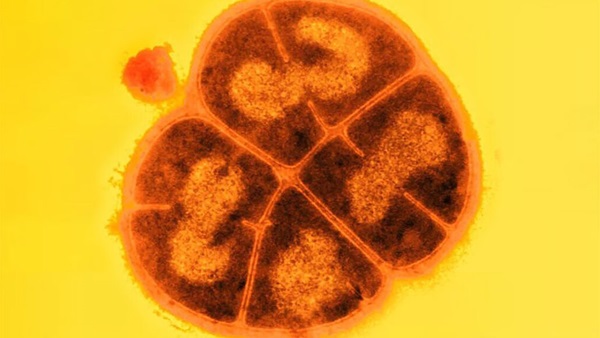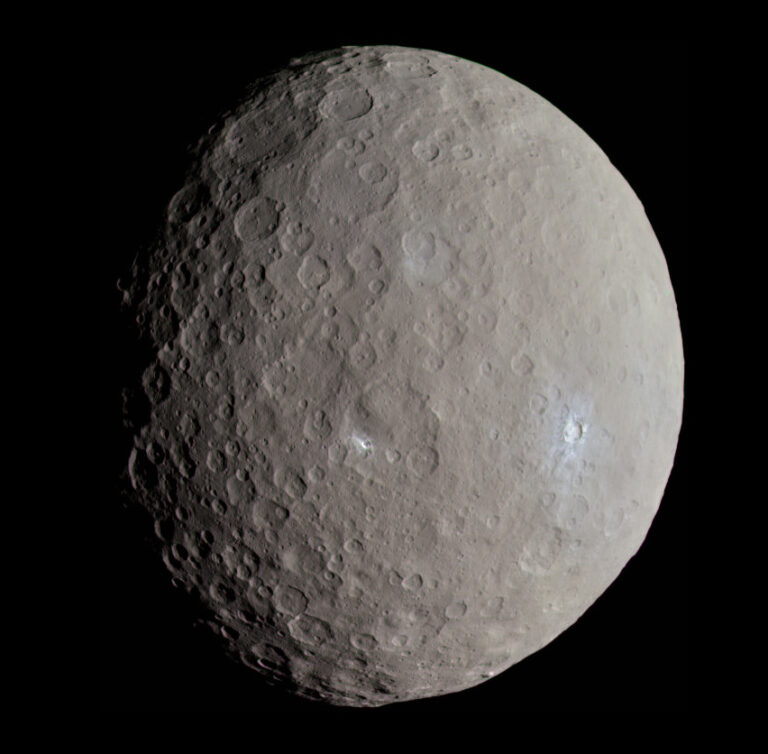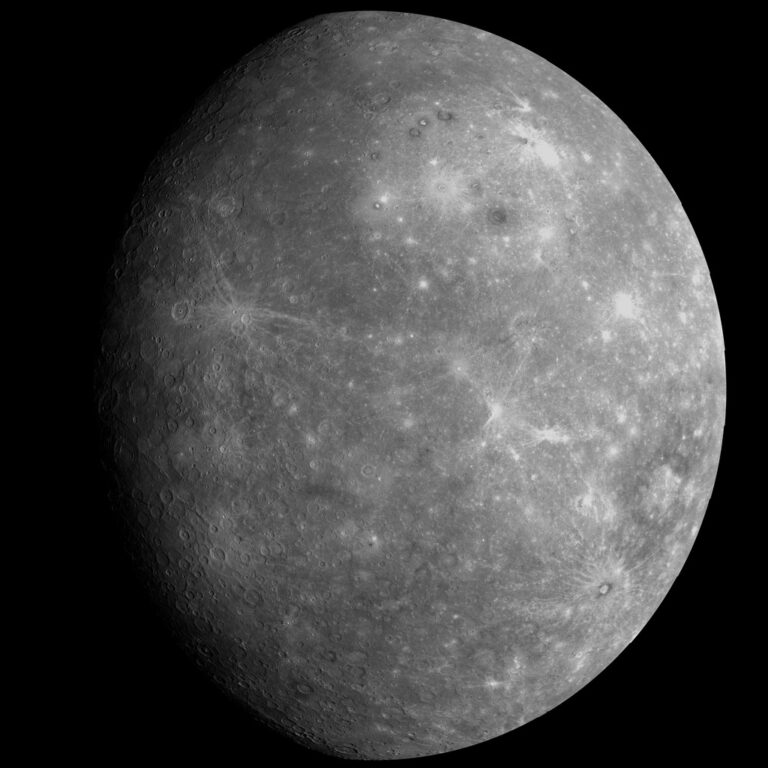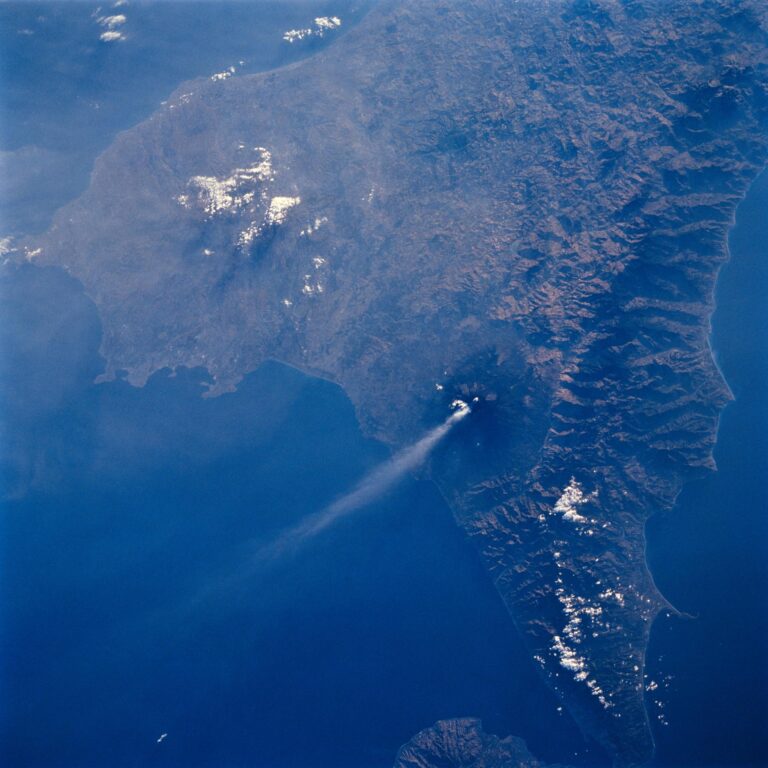Key Takeaways:
It’s not the freezing cold or lack of water that fundamentally limits life on Mars; it’s the radiation. While many bacteria have no problem reviving themselves after enduring centuries or even millennia as freeze-dried microbial mummies, radiation damage adds up over time.
However, new results published Oct. 31 in the journal Astrobiology show that when freeze-dried under Mars-like conditions, the toughest microbes — a species of bacteria called Deinococcus radiodurans — can withstand so much radiation that they could survive in stasis for up to 280 million years in the subsurface layers of the Red Planet.
This finding has important implications for future sample return missions. According to the study’s authors, their results suggest that if martian life ever existed, it could potentially persist to this day. The researchers also note that contamination by Earth microbes accidentally brought to Mars aboard spacecraft could likewise linger on the Red Planet for a very long time.
“I would assume that if life ever existed there, it would still be there,” Michael Daly, a biologist at Uniformed Services University (USU) and coauthor of the study, tells Astronomy. “I can’t imagine that if life evolved on Mars, that somehow it would just all disappear.”
Radiation is a ticking clock
Mars isn’t a friendly place. The Red Planet is a bone-dry, freezing cold desert with hardly any atmosphere to speak of. And it’s been that way for billions of years. But while stepping out unprotected onto the martian surface wouldn’t end well for you, it wouldn’t be particularly concerning for many microbes.
That’s because, even though all organisms need water to grow and multiply, many microbes have no problem waiting out dry spells in a dormant state. Some can last centuries, millennia, or even millions of years if need be. In fact, freeze-drying can actually help dormant microbes survive longer than usual.
“A lot of bacteria can survive desiccation — loads of them can. Spores of bacillus can survive desiccation with a giggle and a laugh,” Peter Setlow, a microbiologist at the University of Connecticut and coauthor of the study, tells Astronomy.
Freezing temperatures aren’t much of a threat either, Setlow added, especially in extremely dry environments like Mars. “The damage usually comes because you have water, you freeze it, and you get ice crystals and it does damage. So that’s going to be a minimal problem.”
Radiation, meanwhile, is different. For cells, it’s a ticking clock.
That’s because radiation shreds DNA. And after enough radiation exposure, a cell dies. Even ultra-tough D. radiodurans can’t survive infinite radiation. Furthermore, because dormant cells can’t actively repair themselves, radiation exposure places a hard limit on their survival time. Even for organisms buried deep enough below the martian surface, where they would escape the harsh radiation at the planet’s surface, a low dose of inescapable background gamma radiation would still slowly but inevitably degrade their DNA.
“At some point, the damage is such that even when they come back to life,” Setlow says, “there can be so much damage that it’s irreparable.”
Pushing the limits of life
The researchers wanted to know how much radiation D. radiodurans (nicknamed “Conan the Bacterium”) can handle under Mars-like conditions for a while now. The problem wasn’t the will — it was the way.
These stubborn bacteria (especially when freeze-dried) can handle so much radiation that most labs simply can’t produce enough deadly rays over a long enough period of time to kill them, according to coauthor Michael Daly of USU.
“Radiation is dangerous, it’s highly controlled, it’s highly secure,” says Daly. “We can’t say what our dose rate is, but it took days… the world’s most powerful radiation facilities had great trouble getting them dead.”
For the new study, the research team used the facilities at USU and Cornell University to irradiate microbes kept under Mars-like condition until they died.
D. radiodurans, which was the most radiation-resistant, only died after receiving 140,000 grays of radiation. That’s enough to kill a human more than 25,000 times over, and about as much radiation as a microbe would be exposed to if it sat in the martian subsurface for 280 million years.
“It’s such a big number, I use the word astronomical,” said Daly, “You know, five grays will kill you and me.”
Protecting Mars from Earthly microbes
If the new study’s results are confirmed, the extremely long potential survival time of D. radiodurans suggests that DNA-based life on Mars — if it ever evolved there — could still exist on the Red Planet today.
“You would figure that anything that Deinococcus radiodurans can do could be done by a Mars organism that once lived on the surface and is now living subsurface,” John Rummel, senior scientist at SETI institute and former NASA Planetary Protection Officer, who was not involved in the study, tells Astronomy.
And while the Red Planet has been a frozen desert for at least 2 billion years, meteorite impacts can and do disturb subsurface ice, which could create short-lived local oases where dormant cells could revive. Substantial impacts don’t happen every day. But 280 million years — more than four times the amount of time it’s been since the dinosaurs went extinct — gives microbes a long window of opportunity.
This means we can’t assume samples returned from Mars will be sterile, Daly says. “There is the issue of backward contamination: the possibility that if life ever evolved on Mars, and if it is still there, that there is certainly, we believe, a risk of transporting martian microbes back to Earth,” he says.
There’s also the issue of forward contamination. “We live with a lot of extremely ionizing-radiation-resistant organisms on Earth, many of which are also part of the human microbiome,” Daly says. The new results show that if we contaminate the martian subsurface with microbes from Earth, that contamination will probably stick around and potentially complicate life-seeking missions for a long time to come.
Up until now, our rovers have quite literally only scratched the surface of Mars, so it’s quite unlikely we’ve caused any long-lasting contamination yet. But the ExoMars rover planned by the European Space Agency will be able to drill some 6.6 feet (2 meters) deep.
Still, Daly says that while the results underscore the need to think carefully about planetary protection, there’s no need to worry about ruining the Red Planet just yet. And any contamination that does occur will most likely stay local.
“The reality is that terrestrial microorganisms will not proliferate on Mars,” he says. “In a desiccated frozen state, which is not metabolically active, they won’t proliferate. They do not represent a big threat to Mars.”
Still, it never hurts to plan ahead.











